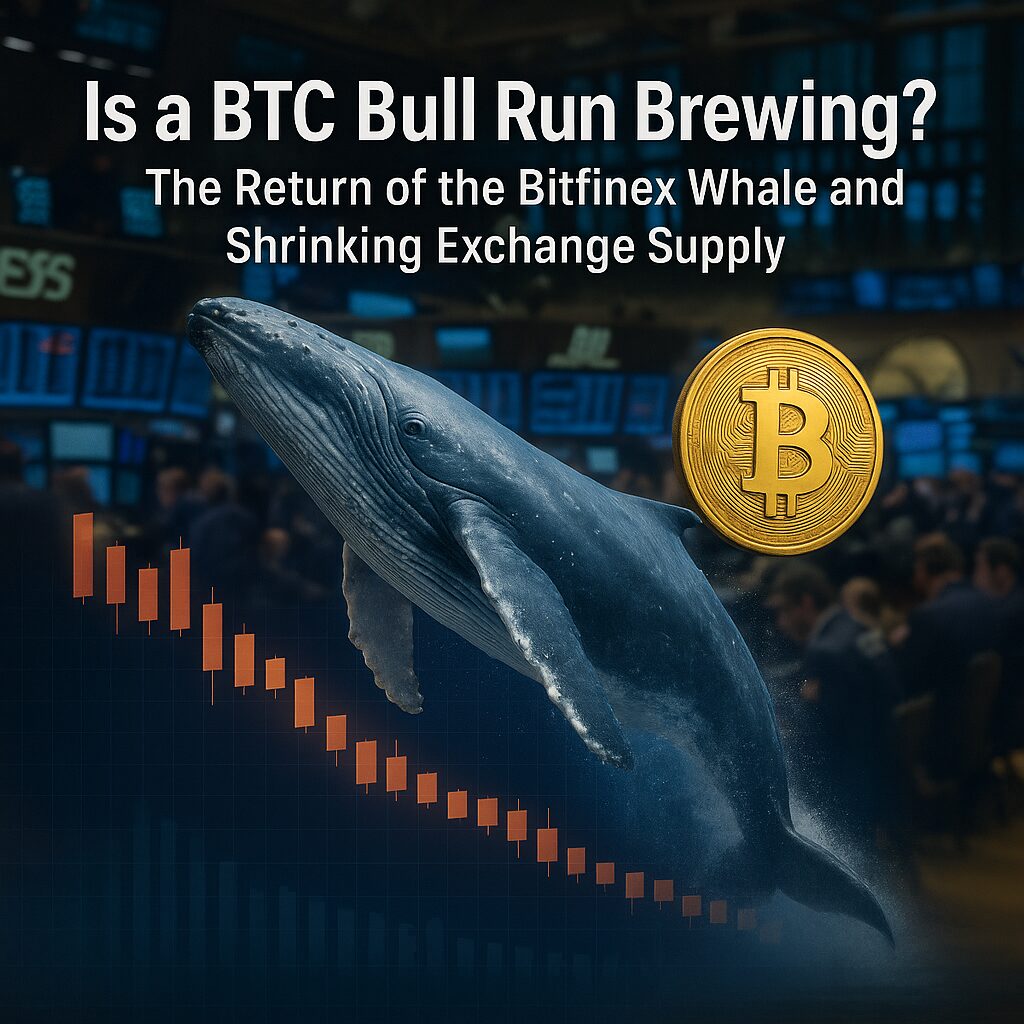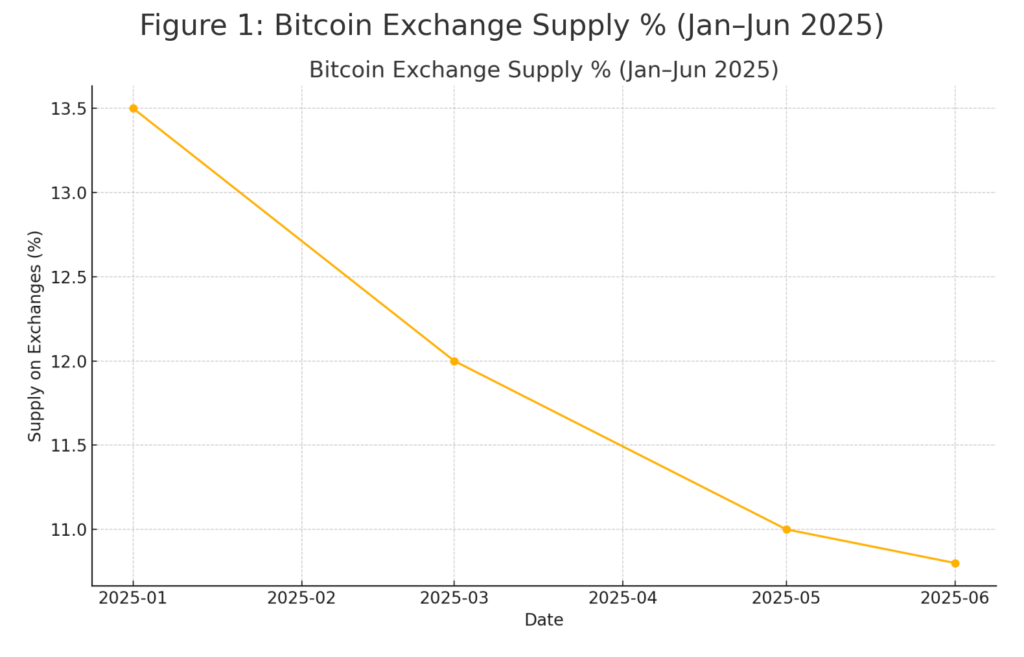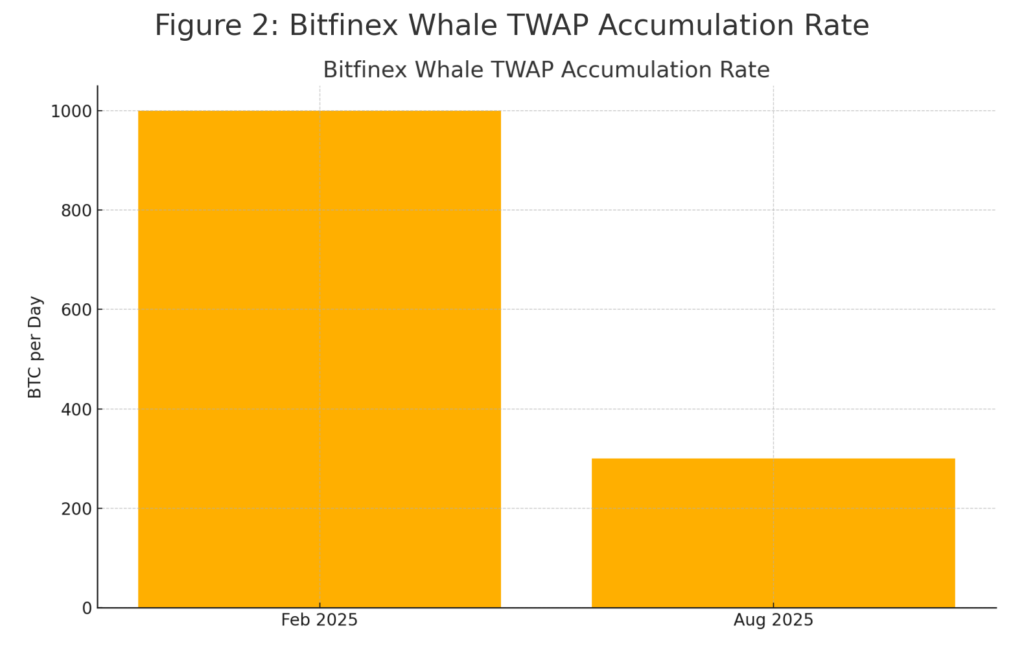
Main Points:
- A major Bitfinex whale has resumed accumulation at
300 BTC/day ($33.9 million/day), using a TWAP strategy over the past 48 hours. - Historically, the same whale has ramped purchases up to 1,000 BTC/day (~$113 million/day), signaling potential pre–bull-run behavior.
- Bitcoin’s exchange reserves have fallen below 11% of total supply—the lowest since early 2018—indicating a tightening liquid supply.
- Some analysts warn that whales often sell into rallies, turning bullish accumulation into future sell pressure.
- Traders should monitor on-chain data (exchange balances, whale flows, active addresses) for signs of a market turning point.
Introduction
In early August 2025, the crypto community was rocked by news from Blockstream CEO Adam Back: a so-called “Bitfinex whale” has returned to the market, quietly buying ~300 BTC per day over the past 48 hours using a time-weighted average price (TWAP) strategy—equivalent to about $400 every second at current levels (Bitcoin recently dipped below $113,000). This renewal of large-scale accumulation has sparked debates over whether it heralds the next Bitcoin bull run or simply reflects tactical “buy-the-dip” behavior that could reverse into hefty sell-offs.
The Bitfinex Whale Returns
Adam Back first flagged the activity on X (formerly Twitter), noting:
“The Bitfinex whale is back. Last 48 hrs, TWAP buying Bitcoin all-day looks like 300 BTC/day for now, roughly $400/sec.”
Over approximately two days, this entity has amassed close to 600 BTC (about $67.8 million) without causing large single-order slippage—employing TWAP to spread orders and minimize market impact. This stealthy approach has reignited interest among traders who view whale activity as a leading indicator of major price moves.
Time-Weighted Average Price Strategy
TWAP strategies break large orders into smaller tranches executed evenly over time. By doing so, they avoid drawing attention and reduce price impact. In this case, the whale’s execution pace of $400/sec translates into continuous small buys that collectively total ~300 BTC/day. Analysts estimate this pace may continue for days or even weeks.
Historical Accumulation Patterns
This particular whale is no stranger to large-scale accumulation. Adam Back reminds us that, in previous cycles, the same actor has:
- Ramped TWAP purchases to 1,000 BTC/day (~$113 million/day, or $1,300/sec)
- Continued such buying sprees for multiple weeks, absorbing significant exchange liquidity.
Such historical precedents often correlate with subsequent strong rallies—making this renewed accumulation particularly noteworthy for investors hunting the next big crypto asset.
Shrinking Exchange Supply: A Supply Shock?
Parallel to whale accumulation, Bitcoin’s liquid supply on exchanges is evaporating. On-chain data shows exchange reserves have dipped below 11% of total supply—the lowest since early 2018. A drying exchange supply can magnify price swings, as smaller shifts in demand hit a thinner pool of coins.
[Insert Figure 1 here: Trend of Bitcoin supply on exchanges (Jan–Jun 2025)]

This persistent decline reflects several converging factors: halving-induced lower issuance, institutional custody inflows (ETFs and corporate treasuries), and prolonged cold storage by whales and retail. Together, they create a potential “supply shock” environment that can fuel rapid price appreciation—or, conversely, exacerbate corrections if demand falters.
Market Implications and Trader Strategies
Bullish Case
- Supply Absorption: Continuous whale buying mops up available supply, supporting prices at or above current levels.
- Pre-Rally Signal: Historical patterns suggest multi-week TWAP sprees often precede strong bull runs.
- Institutional Confidence: Falling exchange balances and rising on-chain accumulation reflect growing institutional conviction in Bitcoin’s scarcity thesis.
Bearish Case
- Sell-the-Rally: Critics note that whales often accumulate in downturns and distribute into rallies, potentially capping gains.
- Volatility Risk: Thinner exchange liquidity can lead to larger price swings, exposing traders to sudden drawdowns.
- Macro Headwinds: Broader economic or regulatory shocks could trigger forced liquidations, overriding whale-driven support.
[Insert Figure 2 here: Bitfinex whale TWAP accumulation comparison (Feb vs. Aug 2025)]

Conclusion
The reemergence of the Bitfinex whale—accumulating ~300 BTC/day via TWAP—combined with record-low exchange reserves, paints a compelling picture of a market potentially setting the stage for the next Bitcoin rally. However, traders should remain wary of the dual nature of whale behavior: while accumulation can signal bullish conviction, it may also translate into future sell pressure. Close monitoring of on-chain metrics, exchange flows, and macro indicators will be crucial for navigating this pivotal phase. Whether this supply-tightening and whale buying culminate in a sustained bull run or a volatile correction remains the defining question for investors in summer 2025.

